Top Reasons for Carving Project Ideas
1. Creative Expression
Carving projects allow individuals to express their creativity in a tangible way. Whether you’re crafting a detailed sculpture or a simple decorative item, the ability to transform raw wood into a work of art enables you to showcase your personal style and ideas. Carving offers limitless possibilities for creative expression, whether it involves intricate patterns, abstract designs, or nature-inspired themes.
2. Stress Relief and Relaxation
Carving can be a calming and meditative activity, helping to reduce stress and promote relaxation. The repetitive motion of carving, combined with the focus on a single task, allows for mindfulness and a break from everyday distractions. Engaging in a carving project can be a therapeutic experience that promotes mental well-being, offering a creative outlet to unwind and clear your mind.
3. Skill Development
Carving projects help develop various skills, from hand-eye coordination and patience to fine motor skills and attention to detail. As you work on different carving projects, you’ll learn to handle tools, understand wood grain, and master various carving techniques. These skills can be transferred to other crafts or even professional woodworking projects, making carving an excellent activity for continuous personal growth and learning.
4. Functional and Decorative Pieces
Carving allows you to create both functional and decorative items that can enhance your living space or serve as thoughtful gifts. Whether it’s a hand-carved spoon, a unique piece of furniture, or an intricately designed sign, carved projects can bring both beauty and utility to your home. These personalized, one-of-a-kind creations are often more meaningful than mass-produced items and can add character and charm to any space.
5. Connection to Tradition and Heritage
Carving has been an important craft for centuries, with various cultures and societies developing their own distinct carving traditions. By engaging in carving projects, you connect to this rich history and preserve traditional techniques. Whether you explore regional styles or learn from historical woodworking methods, carving provides an opportunity to honor and continue the craft’s legacy. This connection to tradition can give your projects additional depth and significance.
6. Sense of Accomplishment
Completing a carving project gives a strong sense of accomplishment. The process of starting with a block of wood and finishing with a detailed, polished piece is both rewarding and fulfilling. It’s a tangible reminder of your efforts and creativity, and seeing your finished work can inspire you to take on more challenging projects in the future. This sense of achievement builds confidence and encourages continued exploration in the craft.
7. Personalized Gifts
Carved items make for unique and heartfelt gifts. Whether you carve a personalized keychain, a wooden sign, or a decorative piece, the time and effort put into the project makes the gift even more meaningful. Personalized carvings, such as family names, special dates, or favorite symbols, add a personal touch that can’t be found in store-bought items. These handcrafted gifts are treasured by recipients and often become cherished keepsakes.
8. Sustainability and Eco-Friendliness
Carving promotes sustainability by using natural, renewable materials. When you choose reclaimed wood or responsibly sourced timber, your projects can be environmentally friendly. Unlike mass-produced items, carved pieces are typically crafted with minimal waste, and the use of organic materials reduces your carbon footprint. For eco-conscious individuals, carving offers a way to create beautiful and functional items while supporting sustainability.
9. Educational Opportunities
Carving projects can be a gateway to learning about the tools, techniques, and history of woodworking. Whether you take a class or watch instructional videos, the process of carving opens up many opportunities for education. It provides insight into the different types of wood, their properties, and the tools required for various techniques. By learning from experienced carvers and practicing the craft, you can deepen your knowledge of woodworking and craftsmanship.
10. Building Confidence and Patience
Carving can be a challenging activity, but the process helps build patience and perseverance. As you work through a project, you learn to overcome obstacles and refine your skills. The trial-and-error aspect of carving teaches you to approach problems with a calm, methodical mindset. Each project completed adds to your confidence, both in your abilities as a carver and in your capacity to tackle future challenges.
Styles That Embrace Carving Project Ideas
1. Whittling
Whittling is one of the most accessible and popular styles of carving, often associated with simple, hand-held knives. Whittling projects range from small figurines to intricate patterns or functional items like spoons and walking sticks. This style embraces organic, freeform designs and requires minimal tools, making it ideal for beginners or those looking for a relaxing, portable carving experience. The charm of whittling lies in its straightforward approach to creating art from a single piece of wood, often characterized by smooth, flowing lines and natural finishes.
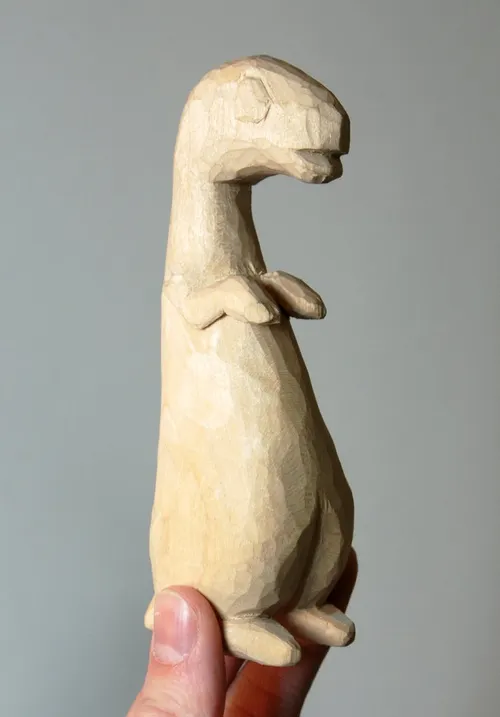
2. Chip Carving
Chip carving involves removing small chips from the surface of the wood to create intricate, decorative patterns. This style is known for its geometric shapes, including diamonds, triangles, and squares, which are meticulously carved to create a repeating, symmetrical design. It’s typically done with specialized knives and requires precision and patience. Chip carving can be used on a variety of objects, from wooden signs to boxes and trays, providing a classic, decorative touch to any piece. This style’s emphasis on detail and design makes it an excellent choice for those who enjoy adding personal, artistic elements to functional items.

3. Relief Carving
Relief carving is a technique that involves carving a design into the surface of the wood, creating a three-dimensional effect. This style can range from shallow reliefs, where the design is slightly raised above the background, to deep reliefs, where the carving is almost free-standing. Relief carving is often used to depict scenes, landscapes, or portraits, making it ideal for those interested in storytelling or fine art through carving. This style allows for a great deal of creativity and can be done on a variety of wooden objects, such as plaques, panels, or frames, creating striking, detailed pieces that showcase both artistry and technique.
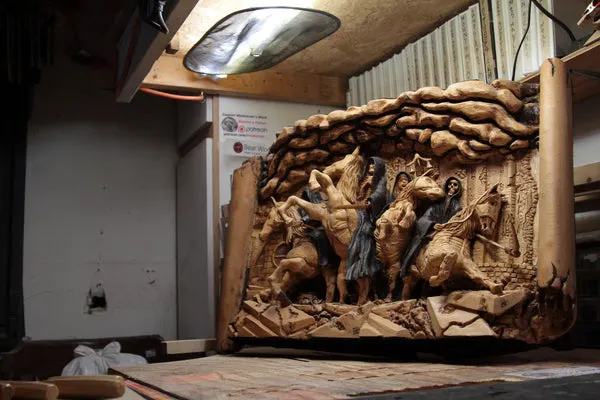
Popular Carving Project Ideas
1. Wooden Spoons
Carving wooden spoons is a classic and rewarding project for beginners. A simple design, such as a basic eating spoon or a small serving spoon, allows you to practice shaping and detailing while keeping the process manageable. Softwoods like basswood or pine work well for this project, and the result is both functional and artistic.
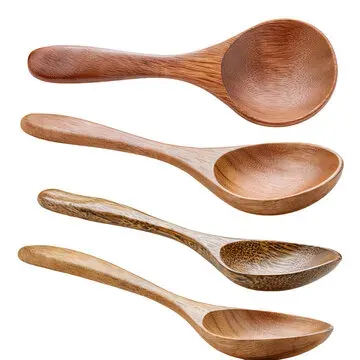
2. Wooden Figurines
Creating small wooden figurines can be a fun and creative project. Start with basic shapes, such as animals or simple human forms, and then refine the details using your carving tools. This project allows you to practice fine detailing and can be completed with various types of wood, including basswood or butternut.
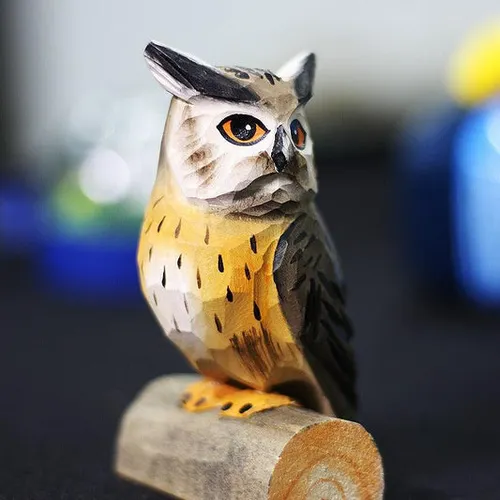
3. Wooden Bowls
Carving a wooden bowl is a satisfying project that offers both functional and decorative outcomes. It requires a bit more time and patience, but the process is very fulfilling. Choose a softwood like pine or aspen for easier carving, or opt for hardwood like maple for a sturdier, more durable bowl.
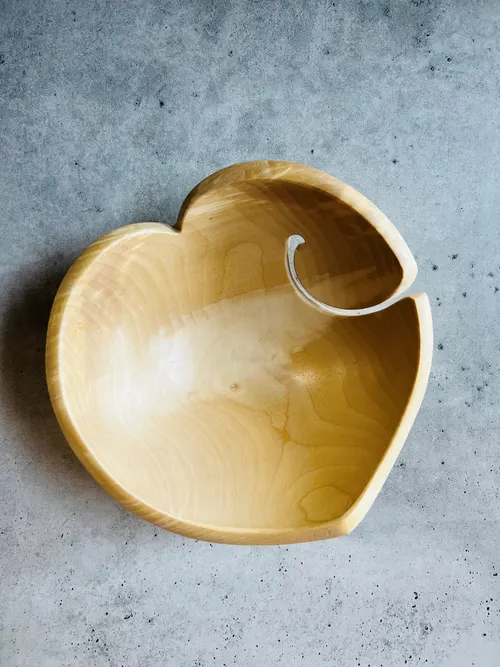
4. Keychains
Wooden keychains are a great small-scale project for beginners. You can carve simple designs, initials, or symbols on a small piece of wood to make a personalized keychain. This project is quick, easy, and makes a great gift. Softwoods like pine or basswood are perfect for carving intricate designs.

5. Wooden Coasters
Carving wooden coasters allows you to explore different shapes and patterns. You can carve simple geometric designs or intricate patterns like mandalas. This project is perfect for practicing basic carving skills and results in a practical item that can be used in any home or office.
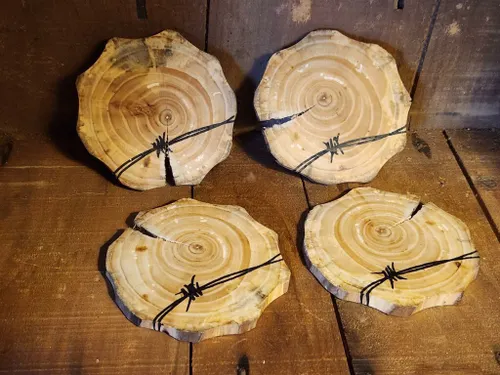
Quick Tips for Embracing Carving Project Ideas
1. Start with Simple Projects
If you’re new to carving, begin with basic projects that allow you to practice and develop your skills. Items like small spoons, keychains, or simple geometric shapes can provide a great introduction to carving. These projects typically require fewer tools and allow you to focus on mastering your technique without feeling overwhelmed. As you gain confidence, you can gradually take on more complex projects.
2. Choose the Right Wood
Selecting the appropriate wood is crucial for successful carving. Softer woods like basswood, butternut, and pine are easier to carve, especially for beginners. These woods are gentle on carving tools and allow for smooth cuts. Hardwoods like oak or walnut are more challenging to work with and may require specialized tools, but they produce durable, high-quality carvings. Always consider the type of project you’re working on and choose wood that suits your skill level and desired outcome.
3. Invest in Quality Tools
While it can be tempting to purchase inexpensive tools, investing in high-quality carving tools can make a significant difference in the final result of your projects. Sharp, well-maintained tools reduce the effort needed to carve and allow for more precise, detailed work. A good set of carving knives, chisels, and gouges is essential, and if possible, look for tools that are ergonomic and comfortable to use for extended periods.
4. Take Your Time
Carving is an art that requires patience and attention to detail. Avoid rushing through projects to ensure that each cut is clean and precise. Allow yourself to work at a steady pace, focusing on small sections at a time. This will help you avoid mistakes and produce a smoother, more refined carving. Remember, the process of carving can be just as enjoyable as the finished product, so take your time to appreciate every step.
5. Practice Proper Safety Measures
Carving involves sharp tools, so safety should always be a priority. Always carve away from your body and hands to reduce the risk of injury. Work in a well-lit, organized space, and use a carving glove to protect your non-dominant hand. Keep your tools sharp and clean to reduce the risk of slippage. Lastly, always store your carving tools properly to prevent accidents and ensure they remain in good working condition.
6. Embrace Experimentation
Carving allows for a lot of creative freedom, so don’t be afraid to experiment with different styles and techniques. Try out various textures, patterns, and designs to discover what works best for you. As you progress, you’ll develop your own carving style and preferences. Experimenting with new ideas and pushing your creative boundaries can lead to surprising and rewarding results, so embrace the learning process and enjoy exploring different carving possibilities.
7. Start Small and Build Up
When taking on more advanced carving projects, start small and gradually increase the size and complexity of your pieces. Starting with a manageable project allows you to develop your skills and avoid feeling overwhelmed by larger, more intricate designs. For example, if you want to carve a sculpture, start with a small figurine before tackling a full-sized piece. This approach will help you build confidence as you progress in your carving journey.
8. Study Other Artists
Look at other carvers’ work for inspiration and to learn different techniques. Whether you’re browsing through woodworking books, visiting galleries, or exploring online communities, studying other artists’ carvings can help you expand your knowledge and spark new ideas. You can pick up tips and tricks that will help you improve your own technique, and you may also discover new styles or approaches that resonate with you.
9. Maintain Your Tools
Maintaining your carving tools is key to achieving precise and clean cuts. Regularly sharpen your knives, gouges, and chisels to ensure they stay effective and safe to use. Dull tools can lead to frustration and errors in your carving work. It’s also important to keep tools dry and free from rust, as moisture can damage metal components. Proper care will extend the life of your tools and ensure they perform at their best.
10. Use the Right Finish
Once your carving project is complete, applying a finish can enhance its appearance and preserve the wood. Different finishes, such as oils, waxes, or varnishes, offer varying levels of sheen and protection. Choose a finish that complements the type of wood you’ve carved and the look you want to achieve. For example, an oil finish brings out the natural grain of the wood, while a wax finish provides a softer, matte appearance. Always test the finish on a scrap piece of wood to see how it reacts before applying it to your project.
Conclusion
carving is a rewarding and creative craft that allows you to transform simple pieces of wood into beautiful works of art. Whether you’re a beginner or an experienced carver, embracing carving project ideas requires patience, the right tools, and a willingness to experiment. Starting with simple projects helps build foundational skills and boosts confidence, while choosing the appropriate wood ensures that you achieve the best results. It’s important to invest in quality carving tools, as they not only make the process smoother but also contribute to the precision of your work. Safety is paramount, and by following the proper precautions, you can enjoy the craft without worry. Taking your time and practicing regularly will lead to steady improvement and more intricate projects over time. Experimenting with various techniques and styles helps to expand your creativity and refine your skills, allowing you to explore new ideas and develop a personal carving style. Lastly, maintaining your tools and using the right finish will enhance the longevity and beauty of your projects. Carving offers endless possibilities for creativity, and with dedication, you can create stunning, functional pieces that reflect your artistic vision and craftsmanship. Embrace the journey and enjoy every cut along the way!